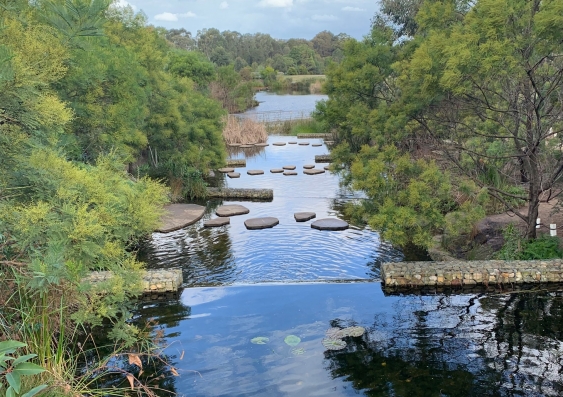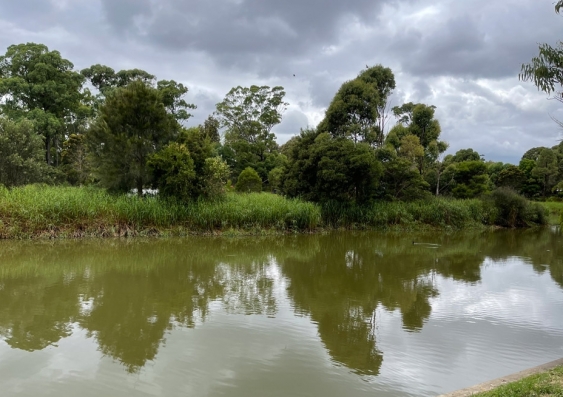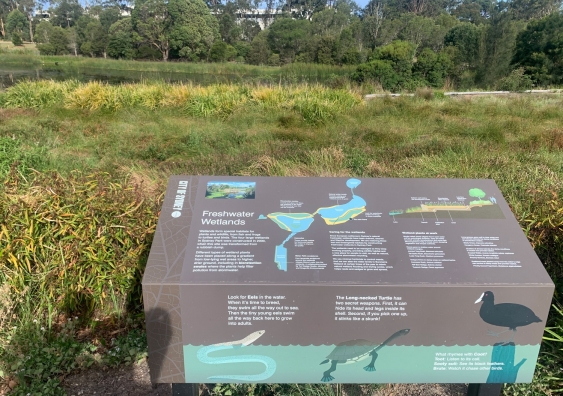Testing the waters: local communities engage with sustainable water practices
Engaging communities on water quality testing and stormwater management promotes cultural ownership and investment in sustainable water practices.
Engaging communities on water quality testing and stormwater management promotes cultural ownership and investment in sustainable water practices.

Nadia Razzhigaeva
UNSW Arts Design & Architecture News & Content Coordinator
02 9348 1229
n.razzhigaeva@unsw.edu.au
A team of UNSW social scientists and water engineers is working with local communities to maintain the health of their waterways. The project will build community knowledge of local stormwater management systems, such as wetlands, and water quality testing.
UNSW is partnering with Riverwood Community Centre in Canterbury Bankstown and Georges Riverkeeper through the Georges River Combined Councils’ Committee for the research.
The project, funded by Sydney Water, will aim at developing a community engagement model for local councils to improve community water knowledge and promote meaningful long-term connections with water.
“The research addresses some of the disconnections between communities, water authorities and local water infrastructure,” says project lead Dr Marilu Melo Zurita from UNSW’s Faculty of Arts, Design & Architecture.
The Salt Pan Creek Wetlands in Riverwood, for example, support diverse local activities, including one of the largest community gardens in New South Wales.
“The wetlands are the centrepiece of the community’s engagement and recreational activities for families, yet awareness of how they connect to the wider water system and its purpose has not been explored,” Dr Melo Zurita says.
“The project will develop water literacy within this community group with a strong track-record of green initiatives to show the value of connecting water infrastructure to people.”
Wetlands are an example of Water Sensitive Urban Design (WSUD), an area of research interest for Dr Melo Zurita. WSUD technologies remove stormwater pollution before it reaches our waterways, repurposing nutrients for vegetation and enabling potential for treated stormwater reuse. They mimic the natural water cycle where possible to better protect the local environment and waterways.
“You might have gone for a walk around some WSUD technologies. If you've been to Sydney Park, you probably have seen extensive wetlands and enjoyed them. They're quite beautiful: the water flows, there's bird life, there's a lot of vegetation growing around it,” the human geographer and social scientist says.
Read more: Stormy times still ahead unless lessons are learnt from recent floods
“Sometimes we just walk along these paths, and we just don't fully appreciate what is involved in keeping them going… These water systems actually perform a function in the urban space for water, in terms of cleaning water, making it flow.”
Dr Melo Zurita, Dr Veljko Prodanovic, a Senior Research Associate at the UNSW Water Research Centre, and Ms Nabila Namira, an undergraduate research student at UNSW, are working with the Riverwood Community Centre to monitor and test the wetland water quality. “These measurements can help us understand what the system does for example, when there is rain, when there are periods of drought,” Dr Melo Zurita says.
Engaging with different groups helps establish these systems as part of our lives, she says. “This will create legacy knowledge on water challenges for the local populace and promote further community self-education beyond this project.”
The project will also deliver community-led sessions, develop new wetlands signage and community participation activities, such as community-guided tours, to promote that sense of community ownership.
“Projects like this show the true value in interdisciplinary research to promote sustainable water practices for the future,” says Dr Prodanovic. “For an engineer, it is important to design and construct infrastructure to complement and support local community. Green and blue spaces that WSUD technologies provide could provide even more benefits with involvement of local community knowledge and sense of ownership over these spaces.”
The project methodology will be shared through the Georges Riverkeeper, City of Canterbury Bankstown and Sydney Water networks to promote future community engagement in line with Sydney Water’s water literacy and advocacy program.
This is one of six community projects recognised by Sydney Water’s Community Grants program, and allocated $10,000 for its ability to improve water literacy in the local community. Sydney Water is proud to support projects aimed at improving community members’ level of water education and understanding of the value of water today and in the future, as well as generating environmental, social, economic or cultural benefits for these communities.

The Riverwood wetlands are an integral part of recreational activities for local families. Photo: supplied.
Dr Melo Zurita is interested in how humans interact with their immediate environments to create inclusive and sustainable living environments, from water to soil, even underground sites of urban development and cultural significance.
She says the current techno-centric trend has minimised social considerations in water design and management. In her ongoing collaborations with the Georges Riverkeeper, Dr Melo Zurita and her postgraduate students have researched how communities interact with WSUD to inform their design.
“We want to know what these systems are doing for the communities around them, not only for the water and vegetation and the wildlife, but also what they do in terms of communities… During lockdown, these spaces became essential for mental and physical health [or they can be] a safe space for multiple groups,” she says.
Dr Melo Zurita, Dr Veljko Prodanovic and then-master’s student Taylor Coyne investigated historic changes in the relationships between urban communities and water infrastructures in the Georges River catchment. The river crosses six Indigenous countries – Kamegal, Bedigal, Cabrogal, Cannemegal, Gweagal and Norongerral – and eight council areas, so these relationships are historically complex.
This collaboration with UNSW students, funded by the Georges Riverkeeper, carried out behavioural mapping, observing contemporary patterns of use, such as exercise, dog/walking, picnicking, and surveys as well as examining post-European settlement historical documents, maps, journals and newspaper articles. A paper published as a result of this aspect of the research traced shifts in water values and perspectives over time and how these affected interactions with and governance of the river.
“[The river] became at times a hydraulic project… How do you divert this body of water in different directions? How do you change it? Then it became a dangerous river, a menacing river, the waters rising and threatening the urban development around it,” she says.
'We want to know what these systems are doing for the communities around them, not only for the water and vegetation and the wildlife, but also what they do in terms of communities… During lockdown, these spaces became essential for mental and physical health.'
“And then it became the recreation river, where people would go either fishing, swimming... The river has been perceived differently [at different times] and it has invited different stakeholders to enjoy or be part of the decision-making processes of the river.”

Freshwater wetlands at Sydney Park. Photo: Supplied.
Understanding these changing relationships is vital for designing water infrastructure that is fit-for-purpose, she says. Her research with Mr Coyne proposed moving from purely technical models for stormwater management to culturally inclusive water urban design.
Mr Coyne, now a PhD candidate at UNSW, says: “Culturally inclusive water urban design links the social with the ecological. There is a need to reflect on people's connections and uses of urban waterscapes to ensure urban water design considers its social, technical, cultural, ecological and political ramifications.”
Dr Melo Zurita and undergraduate student Max Kwok have also collaborated to propose some recommendations for WSUD guidelines and cultural considerations for water management in and around the Georges River.
Read more: Transforming forgotten urban spaces into SkyParks
“WSUD originally paid a lot of attention to water, vegetation, and some of the species that might thrive within these environments. But the cultural component of it, the recognition that this is Country, Indigenous Country, [for example] is absent from these processes.
“I think that the questions about water and the city that are answered from only the technical perspective, are limited,” she says. “By inviting social scientists, we can help bring all these different perspectives into the conversation that I think are essential for the health of the ecosystems that we live in, that we are part of…
“What we do today has repercussions and ripples in the future, but we also need to pay attention to the ripples of the past, to what has [already] happened.”